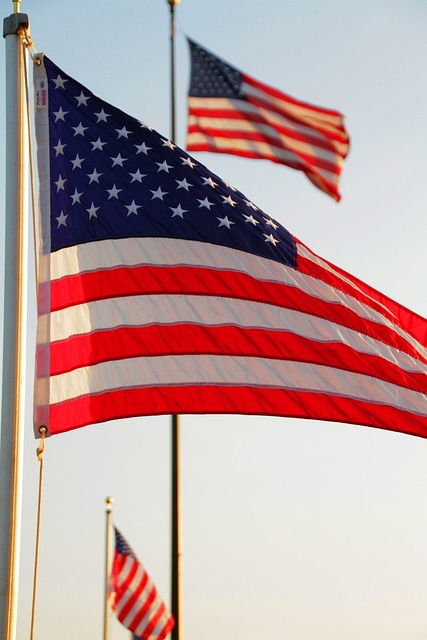The American Flag, a symbol of "We the People," represents the nation's unity and diversity. Its stripes and stars, evolving over time, honor the colonies' struggle for independence, the Constitution, and freedom fighters. Displaying the flag respects America's history and fosters national identity. "We the People" encourages citizens to engage with democracy, while Flag Day celebrations reconnect us to our collective past and core values of liberty, equality, and justice.
In the heart of the Americas, the symbol of ‘We the People’ resonates through the vibrant stripes and stars of the American Flag. This article delves into the multifaceted symbolism of Old Glory, exploring its historical context and design significance. From its birth during revolutionary times to its representation of unity and diversity today, the flag calls us to engage civically and celebrate our shared identity as Americans. Discover how ‘We the People’ embodies the spirit of a nation united under one iconic symbol.
- The Symbolism of the American Flag: We the People
- Historical Context: The Birth of an Idea
- Design and Significance: Stars, Stripes, and Unity
- We the People: A Call to Civic Engagement
- Celebrating Diversity and Inclusivity Under the Flag
- Preserving and Honoring Our National Identity
The Symbolism of the American Flag: We the People
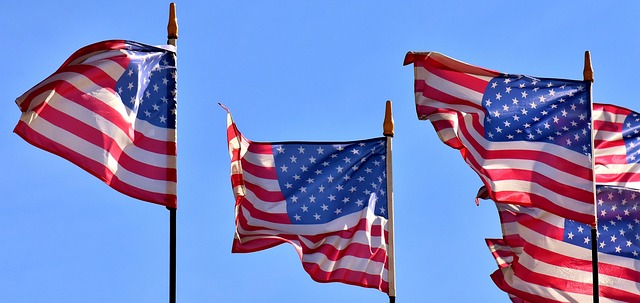
The American Flag, with its bold red, white, and blue stripes and 50 stars, serves as more than a national emblem; it’s a powerful symbol of “We the People.” Each element of the flag carries profound meaning, reflecting the values and ideals upon which the nation was founded. The striped pattern represents the thirteen original colonies, while the fifty stars signify the union of all states, highlighting the collective power and unity of the American people.
Displaying respect for the flag is not merely a ritual; it’s an expression of our shared identity as citizens. American flag etiquette guides us in showing due reverence to this symbol of freedom and democracy. From flying it at half-mast to proper display guidelines, these practices underscore the importance of the flag as a testament to our nation’s history and the enduring spirit of “We the People.” The flag design itself has evolved over time, drawing inspiration from both historical and contemporary elements, reflecting the dynamic nature of American society and its people.
Historical Context: The Birth of an Idea

In the crucible of America’s revolution, the concept of “We the People” emerged as a powerful ideology, shaping the nation’s foundation. The birth of this idea can be traced back to the 18th century when the colonies sought independence from British rule. The American flag, with its stars and stripes, became more than just a symbol; it represented the collective spirit of freedom and self-determination. This national identity through flags was a visual manifestation of the revolutionary ideals that united diverse communities under a common cause.
As the nation’s founders crafted the Constitution, they aimed to create a government that would resonate with “We the People.” The national anthem and flags played a pivotal role in fostering a sense of unity and patriotism among Americans. Through reproduction historical flags and their evolving designs, the country celebrated its rich heritage and the principles upon which it was founded. This visual language helped forge a bond between citizens, transcending differences to embrace a shared history and destiny.
Design and Significance: Stars, Stripes, and Unity
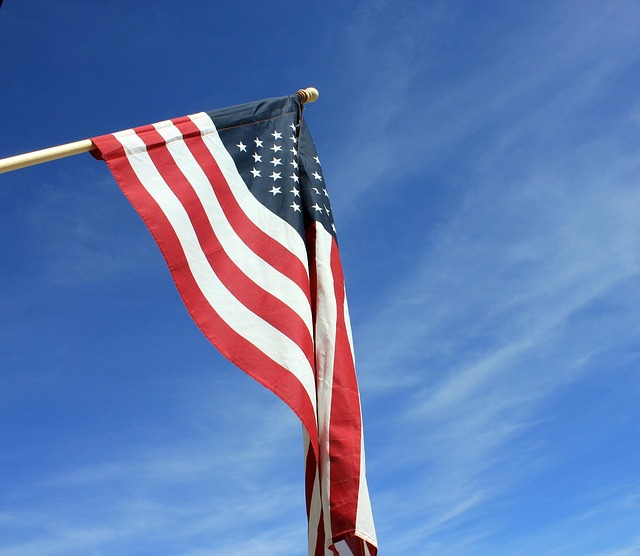
The design of “We the People” incorporates stars and stripes, symbolizing unity and diversity within the nation. Each star represents a state, reflecting the collective strength and individuality of every American community. The stripes, alternating red and white, stand for the brave men and women who have fought to protect our liberties and freedom. This iconic symbol serves as a powerful reminder of our shared history and values.
Beyond its aesthetic appeal, the flag inspires feelings of patriotism and national pride. Displaying “We the People” flags, whether custom-made or bought from reputable suppliers like those offering flag restoration services, is an act of respect for our nation’s past, present, and future. It fosters a sense of belonging and encourages citizens to embrace their responsibilities as part of this grand tapestry we call America.
We the People: A Call to Civic Engagement
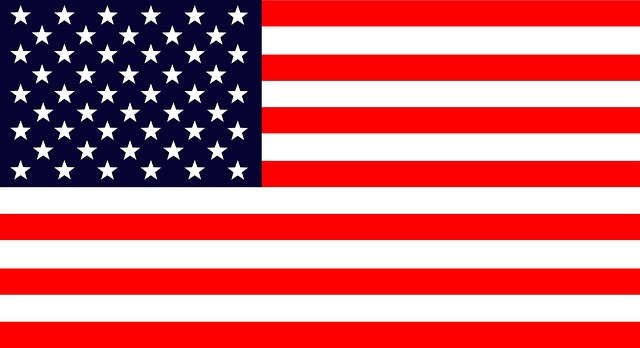
“We the People” is more than just a phrase from the American constitution; it’s a call to action, an encouragement for every citizen to engage in their civic duties and shape their nation. The concept embodies the very essence of democracy, where the power lies with the people. This engagement is often relived and reinforced through iconic symbols like the American flag, which serves as a tangible reminder of our shared history and values.
National anthem and flags go hand in hand when it comes to fostering a sense of national identity and unity. They become touchstones for gathering, celebrating, and reflecting on our collective heritage. Visiting flag heritage sites across the Americas offers an immersive experience, allowing us to delve into our past, understand our present, and envision a future guided by the principles represented by these vibrant symbols.
Celebrating Diversity and Inclusivity Under the Flag
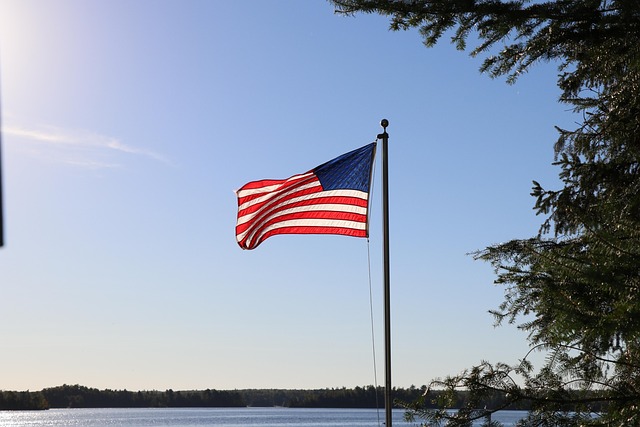
The American flag, known as “Old Glory,” is more than just a symbol; it represents the diverse tapestry woven by we the people of the United States. Celebrating diversity and inclusivity under this iconic banner is a testament to the nation’s evolving ideals. The flag, with its vibrant stars and stripes, has historically reflected the changing demographics of America, from its early colonial roots to the multicultural landscape of today.
The history behind the American flag tells a story of unity in diversity. Each new star represents a state joining the Union, while the red and white stripes symbolize the courage and sacrifice of those who fought for freedom. As a cultural expression, flags have always been powerful tools for fostering a sense of belonging and national identity. The American flag protocol guides us in showing respect and honor during its display, reflecting the importance it holds in our collective consciousness.
Preserving and Honoring Our National Identity

In preserving and honoring our national identity, the American flag serves as a powerful symbol of unity and freedom. We the people, as the nation’s foundation, are entrusted with safeguarding not just its physical landscapes but also its cultural heritage. The history behind the American flag tells a story of evolution, reflecting the changing dynamics of the nation it represents. Each star and stripe is an ode to the ideals upon which the country was founded – liberty, equality, and justice.
Flag Day celebrations are more than mere ceremonies; they are opportunities to reconnect with our collective past and reaffirm our commitment to these core values. As we admire the flag’s design inspiration, rooted in simplicity yet potent symbolism, it becomes a reminder of the enduring spirit that has defined America throughout its history.
The American flag, with its vibrant red, white, and blue, serves as a powerful symbol of “We the People,” encapsulating the very essence of American democracy. Throughout history, this iconic design has inspired a sense of unity and called citizens to civic engagement. Today, it stands as a testament to the diversity and inclusivity that defines the nation. Preserving and honoring our national identity means recognizing the significance of every star and stripe, fostering a sense of belonging for all under the flag, and continuing to strive for the ideals upon which this great nation was founded.
